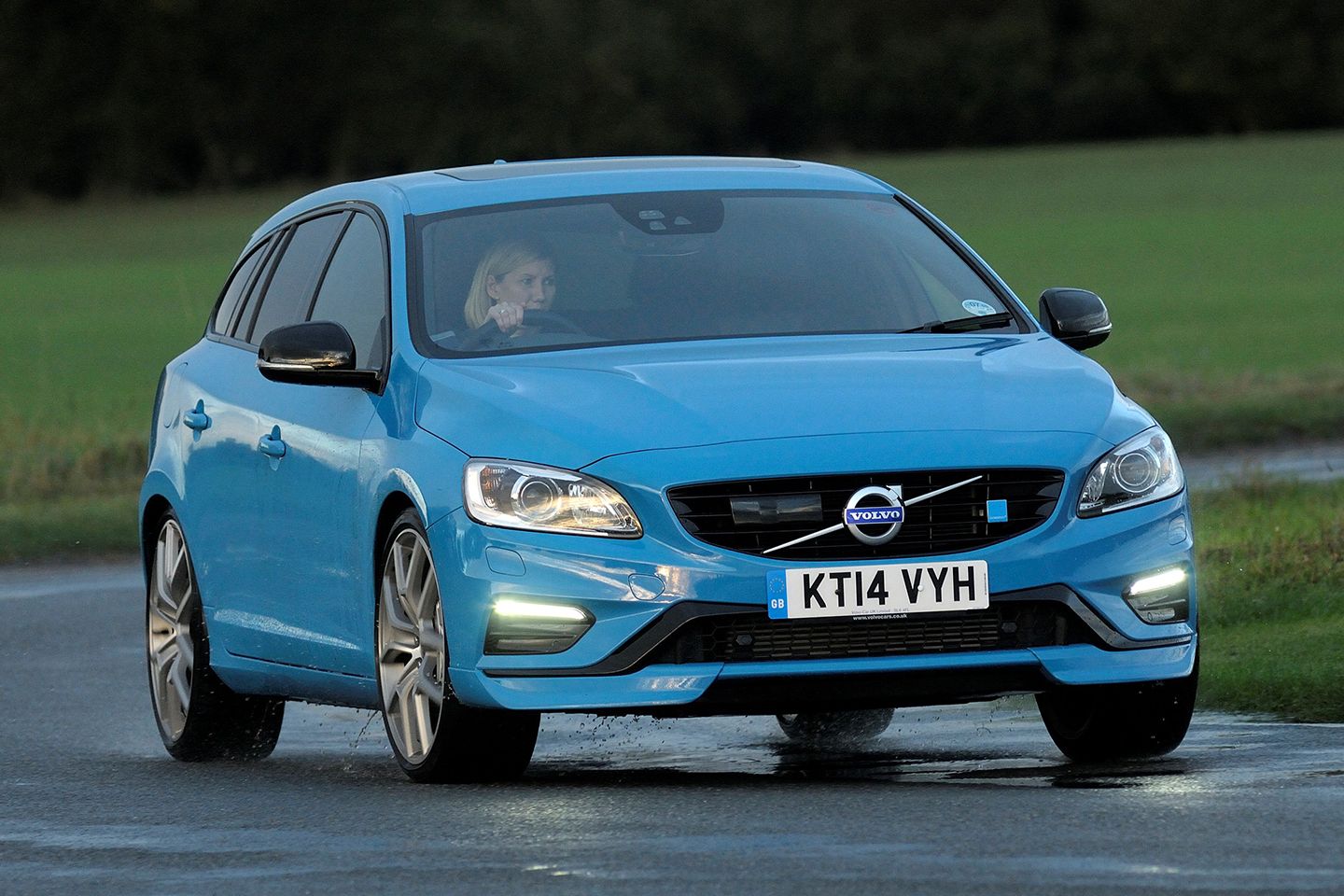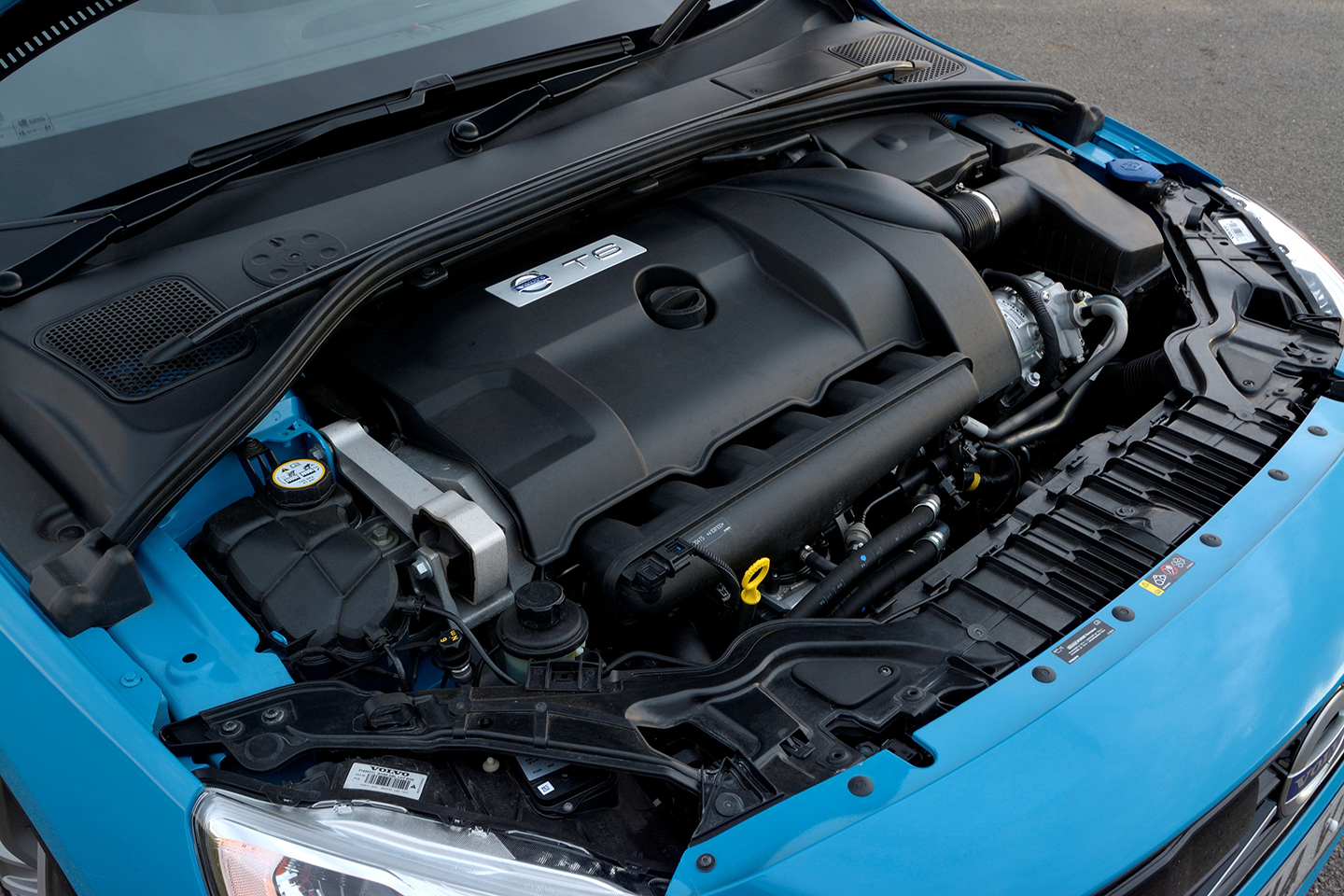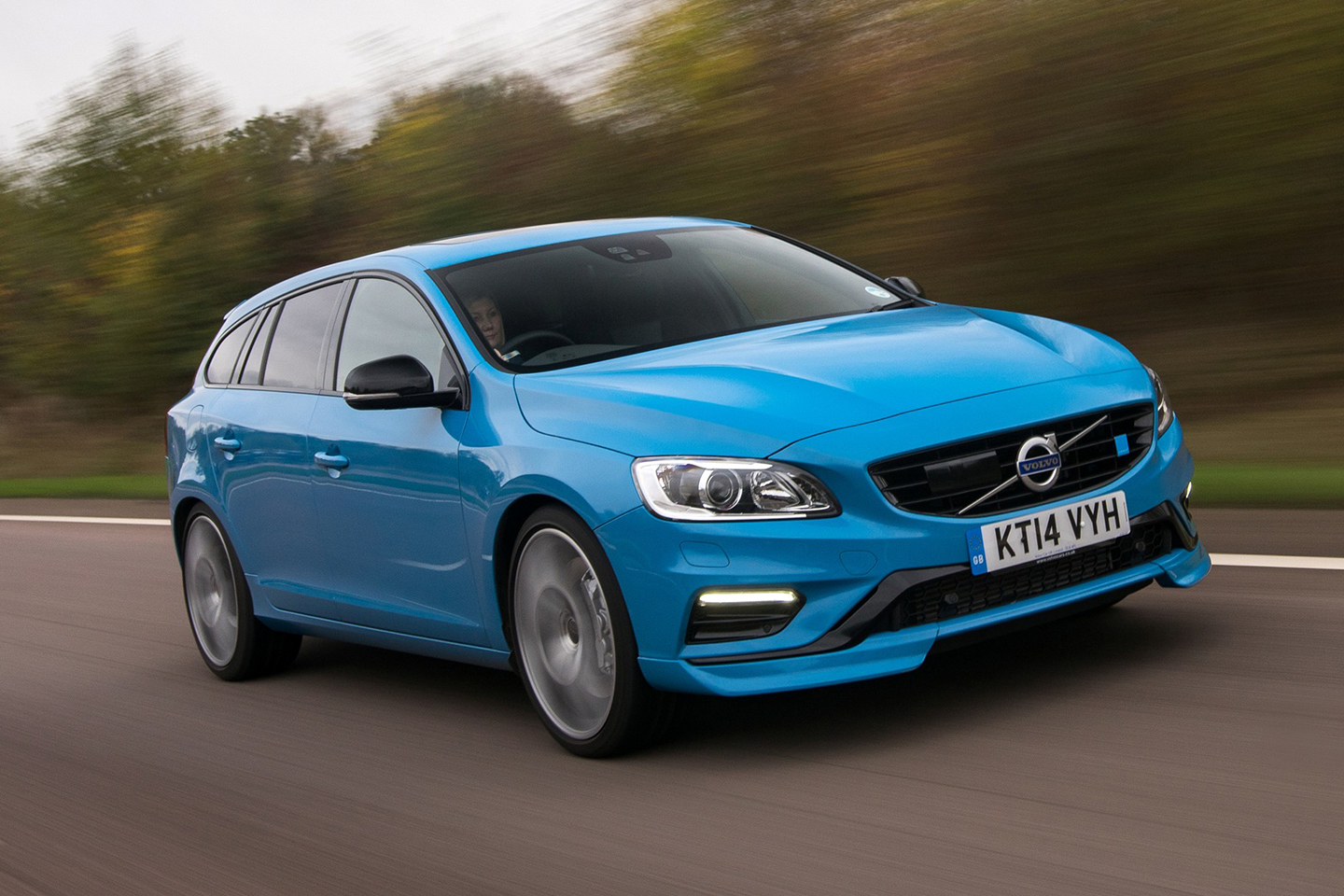Volvo V60 Polestar | PH Used Buying Guide
Like your fast estate vaguely characterful and very durable, but not German? Right this way...
Key considerations
- Available for £23,000
- 3.0-litre inline six turbocharged or 2.0-litre inline four supercharged + turbocharged, all-wheel drive
- Fast, capable, comfortable
- Six pot has more character than four, but fuel bills are high
- Not classic Volvo big load carriers...
- … but they will be the last petrol-only performance Volvos
Through Flash Engineering, Polestar had been involved in Touring Car racing since the mid-1990s. They became Volvo’s ‘official’ performance partner in 2009.
In 2017, two years after Volvo had acquired the company, Polestar was hived off into a discrete brand for electric performance vehicles. The Polestar name wasn’t abandoned by Volvo though. From 2018, regular Volvos were getting sported up under the new Polestar Engineered banner, resulting in mechanically exotic and impressive creations such as the twin-charged (i.e., turbocharged and supercharged) hybrid drive V60 Polestar Engineered with 405hp, 494lb ft of torque and Ohlins adjustable dampers. You could also get your existing Volvo ‘optimised’ with a Polestar Engineered software hop-up.
Before the branch-off into Polestar Engineered, Volvo managed to let off a short burst of internal combustion engined Polestar S60 saloons and V60 estates, still based on the proven Ford EUCD chassis (Mondeo, Freelander 2). The first, for the 2014 model year, was powered by a transverse turbocharged 3.0 litre inline six. In 2016 that was replaced by a smaller-engined (but more powerful) twincharged 2.0 litre four. Both were connected to Haldex-type all-wheel drive systems. These ‘pure’ IC Polestars are what we’ll be looking at in our buying guide today.

The 3.0 V60 Polestar was unveiled at the 2014 Chicago show. It was effectively a V60 T6 R-Design with considerably stiffer (by 80 percent) passive springs, upgraded suspension bushes, a new twin-scroll Borg Warner turbo which boosted power and torque by more than 40hp and 70lb ft, performance exhaust, quicker-shifting 6-speed Aisin Geartronic automatic gearbox, 20in alloys, six-pot Brembo brakes, Ohlins DFV (Dual Flow Valve) dampers and every option box pre-ticked so you didn’t have to. Your only job was to choose was one of the four paint colours: Ice White, Black Sapphire Metallic, Bright Silver Metallic and Rebel Blue, or Swedish Racing Green as Polestar’s PR types drily referred to it off-mic.
The 3.0 S60 Polestar saloon never officially made it to UK shores. Of the 750 3.0 V60 estates scheduled to be built, 125 were allocated to the British market. Whether all 125 sold we’re not sure. Fewer than eighty were showing up as road-registered for the UK in 2021. It seems unlikely that forty-plus would have been written off or stored away.
The 3.0 would be the last six-cylinder performance Volvo. The 2.0 V60 Polestar that replaced it in 2016 achieved another landmark as Volvo’s quickest ever car. Its four-cylinder Drive-E powertrain was spruced up to 367hp by way of a bigger turbo, new conrods and camshafts, bigger air intake and higher-capacity fuel pump. It had a Polestar-optimised 8-speed Geartronic transmission and, alongside those spanner-adjustable and rather lovely Ohlins shock absorbers, a new carbon fibre strut brace.
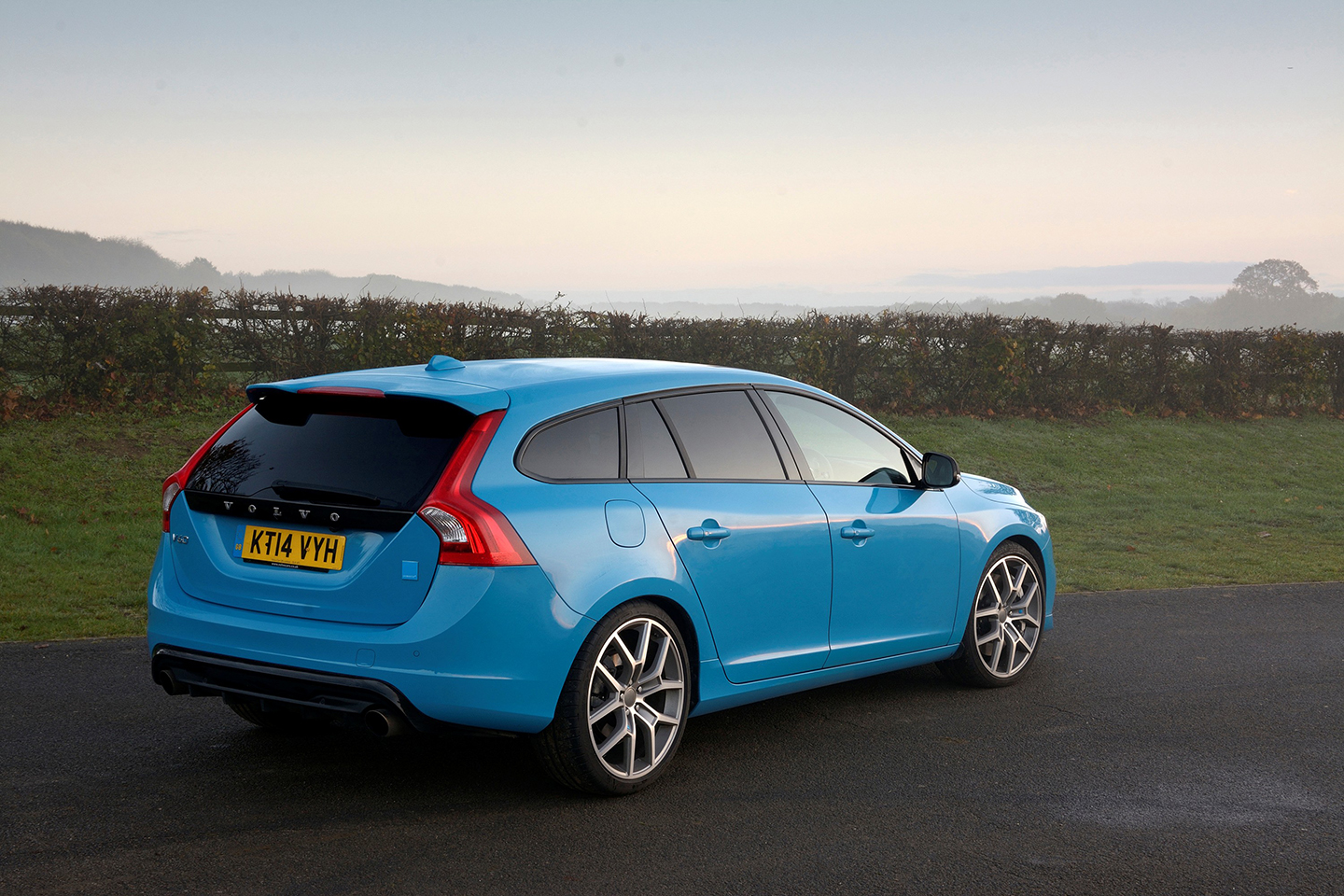
Volvo made twice as many 2.0 Polestars (1,500) as 3.0s, serving 47 markets around the world compared to the 13 that saw the 3.0. Although press drives took place in April 2016, customer deliveries didn’t begin before the fourth quarter of 2016 so it’s highly unlikely that you’ll see any 2.0 Polestars registered before the start of 2017. 2018 was its final model year. By 2021, fewer than 130 2.0s were showing as UK registered.
The hardest part of V60 Polestar ownership today, for UK motorists at any rate, is finding one to own because so few were sold here. As ever, PH Classifieds rides into the rescue with a small but perfectly formed selection of both 2.0 and 3.0 Polestars for your delectation. We’ll be linking you up to those in the Verdict at the end. Other classified ad resources are available to widen your search options but don’t expect to unearth that many more examples.
The entry price for a used 3.0 currently stands at around £23k, with £27.5k being the typical starting point for a 2.0. When you remember that they cost around £50k new that’s not bad for a lavishly equipped, comfortable and practical left-field alternative to a sporty BMW or Mercedes. And, given the short lifespan, limited build, undeniable performance and the fact that there’ll never be any more internal combustion only Polestars, they might even become collectible. Stranger things have happened. The new prices may have been nearly £50k but big discounts brought easy sub-£45k deals, indicating over-optimism by Volvo. Right now, the used prices are still reflecting that because they are still on the way down: only a year ago (2021) you needed £25k for a 3.0.
SPECIFICATION | VOLVO V60 POLESTAR (2014-16, 2016-18)
Engine: 2,953cc 24v turbocharged straight six/1,969cc 16v twincharged four
Transmission: 6-speed auto/8-speed auto (both all-wheel drive)
Power (hp): 350@5,250rpm/367@6,000rpm
Torque (lb ft): 369@3,000-4,750rpm/347@3,100-5,100rpm
0-62mph (secs): 5.0/4.8
Top speed (mph): 155/155
Weight (kg): 1,822/1,802
MPG (official combined): 27.7/34.9
CO2 (g/km): 237/186
Wheels (in): 20
Tyres: 245/35
On sale: 2014-16/2016-18
Price new: £49,775/£49,665
Price now: from £23,000/£27,500
Note for reference: car weight and power data are hard to pin down with absolute certainty. For consistency, we use the same source for all our guides. We hope the data we use is right more often than it’s wrong. Our advice is to treat it as relative rather than definitive.
ENGINE & GEARBOX
The 3.0’s all-aluminium SI6 (short inline six) B6304 engine first saw the light of day in 2006 when production began at Ford’s Bridgend plant in Wales. In turbocharged Polestar spec it had variable valve timing on both the intake and exhaust side and pumped hard above 3,000rpm. Although the 3.0 was surprisingly capable if not hugely entertaining on the track (see Chassis section) its preferred stomping ground was on the motorway where it was more than capable of dishing out rough justice to much more in-your-face performance rivals. It sounded good in standard trim and could be made to sound amazing with the right pipery attached. 400hp+ was easily achievable with a remap.
The blower whine of the twincharged 2.0 wasn’t too shabby either. The 2.0 delivered good if not spectacular urge right through the rev range, from the supercharged bottom end through the turbocharged mid-section to meaningful thrust in the last thousand or so revs above 6,000rpm. It never sounded as characterful as the 3.0 however, despite the best popping and parping efforts of the Ferrita valved exhaust. The 3.0 managed well enough with its 6-speed Geartronic auto, especially if you took the decision-making away from it by using the paddles in Sport mode, but the 2.0’s 8-speed Geartronic was a much more modern, responsive and efficient transmission. Its bigger stack of ratios enabled shorter intermediate gearing and more relaxed cruising in the higher gears, plus noticeably faster changes than the 6-speeder especially in Sport mode. It was a good box in either manual or auto operation.
The official mpg for the 2.0 four was 34.9. For the 3.0 it was 27.7, but one city-based 3.0 owner reported average figures in the 17-18mpg bracket over 18,000 miles of ownership. After comparing notes, some Polestar owners on social media reached the surprising conclusion that the four-cylinder was no more economical than the six, but there might be a bit of confirmation bias going on there.
Volvo is not terribly helpful when it comes to giving you an idea of likely servicing costs. After considerable digging around all we were able to establish was that Polestars tend to fall into the exception bracket when you’re looking hopefully at Volvo’s fixed price servicing offers (like five services for £1150 or three for £699). The only bit of tangible pricing info we could find after inputting the reg number of an actual Polestar was £370 for a maintenance service, with no information given as to what that might be. A rather disappointing lack of transparency there.
Degrading fuel hoses were an issue on some V60s built between April 2015 and March 2016. A Volvo dealer should be able to let you know if any 3.0 Polestar you’re looking at was affected by that. V60s built between 2014 and 2017 were subject to a recall when it was found that air bubbles could remain in an engine’s cooling system after it had been filled with coolant.
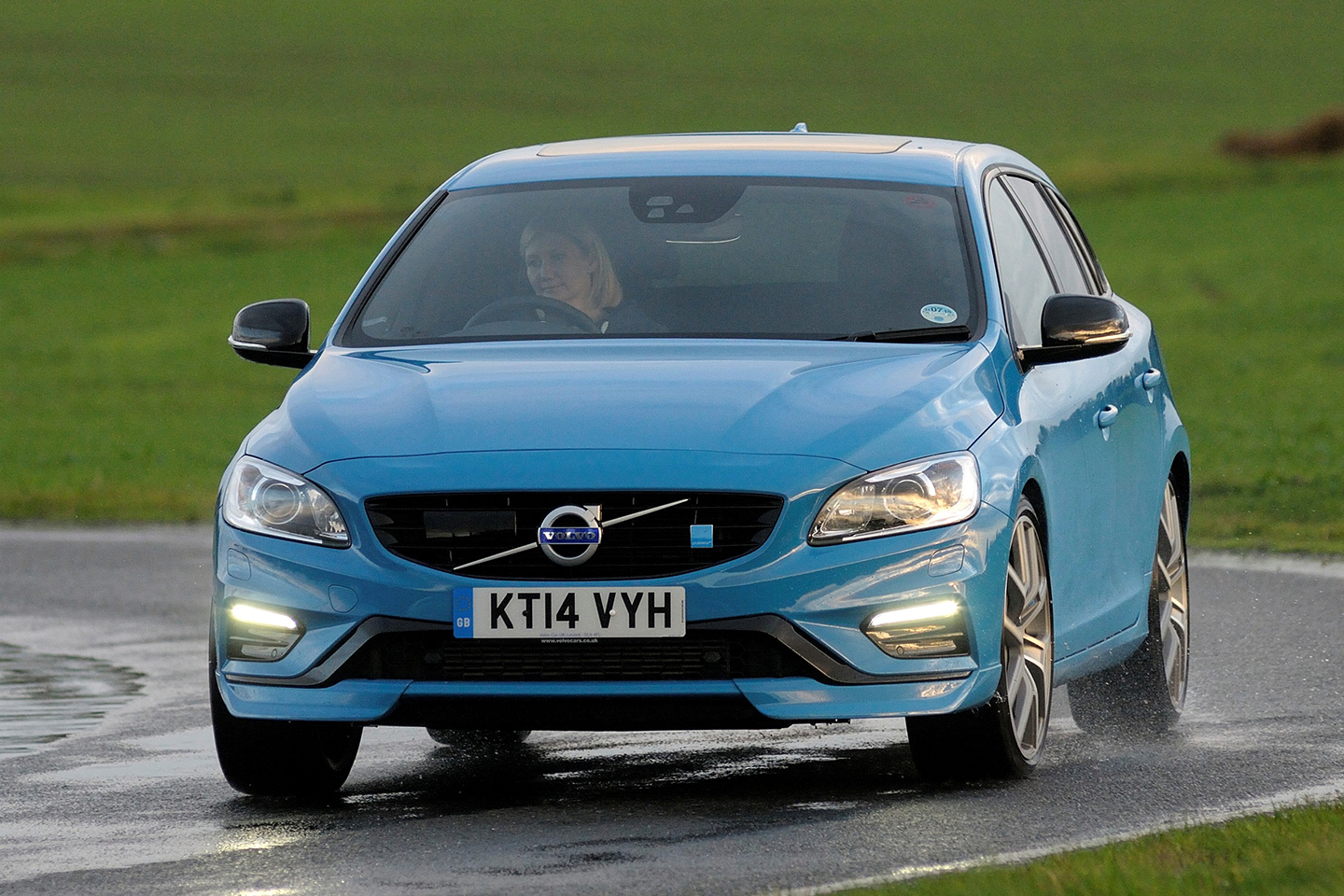
CHASSIS
One UK test showed the 3.0 V60 to be quicker around a track than a twin-turbo Alpina D3 estate. The Volvo did have great grip and traction, usefully rapid turn-in and a flat body posture through bends, but there was no getting away from the fact that there was a lot of weight over the front axle and overall it wasn’t as ‘fun’ as something like a Golf R (which was considerably lighter) or an RS4. Slow in, fast out was a good mantra to have in your head.
Torque steer wasn’t entirely absent, an accidental homage perhaps to overpowered Swedes of yore, and the ride quality on British roads through the Ohlins dampers could be quite jiggly at lower speeds – although in Ohlins’ defence you could lay at least some of the blame for that on 35-profile tyres and 20in wheels.
The lightness of the 2.0 four’s drivetrain relative to that of the 3.0 six (it was 24 kg lighter over the front axle) gave Volvo’s chassis engineers some leeway to soften up the damper settings without losing body control. The front end gained some welcome extra pointiness too. Michelin Pilot Super Sports were original equipment. The electronic parking brake could be a bit flighty on sloping ground.
BODY
For many the best colour was Rebel Blue. Press cars were in this colour but Rebel Blue V60 Polestars are not commonly found on the used market. Clearly owners are holding on to them.
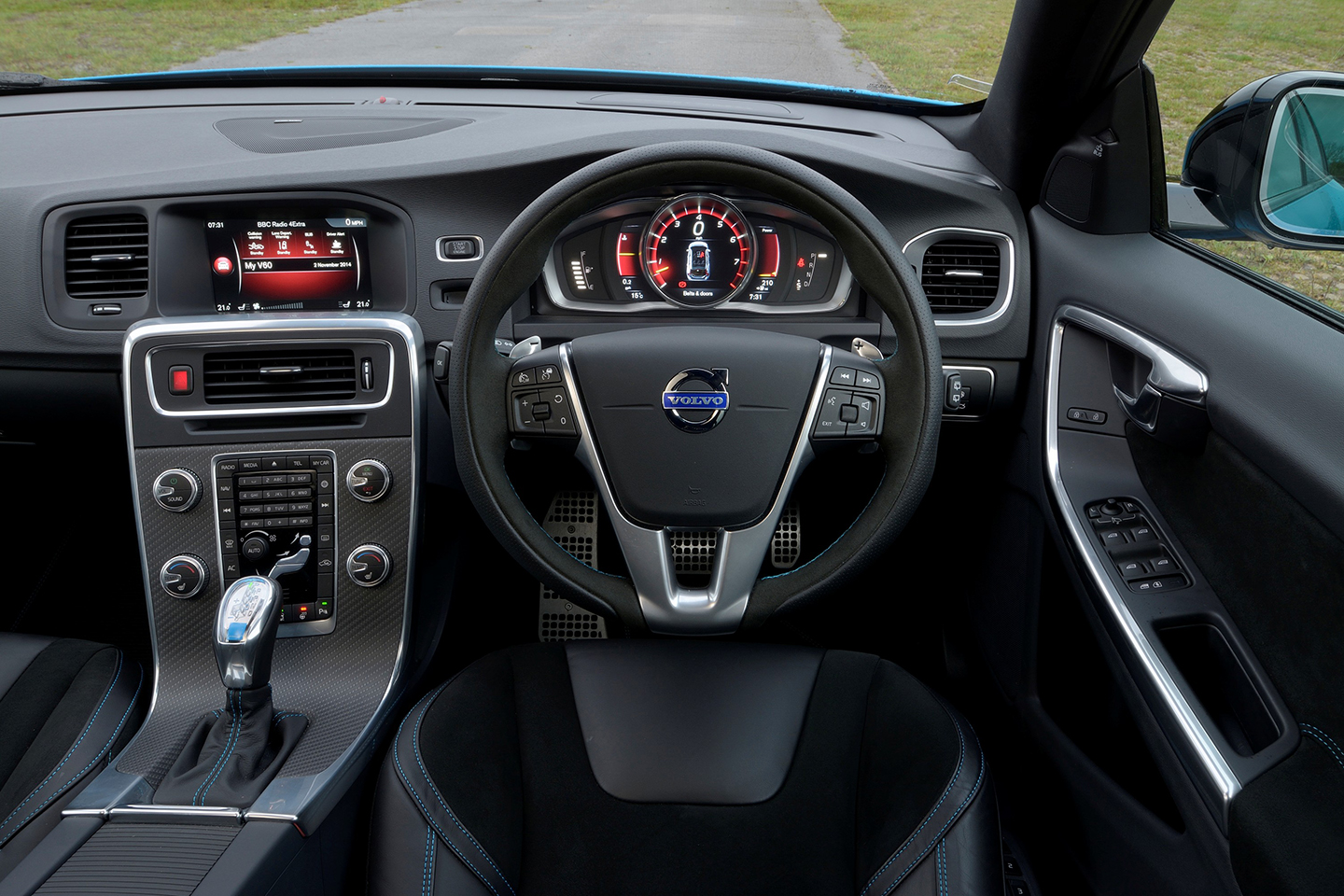
INTERIOR
As a marque, Volvo has always been associated with good passenger care. The V60 Polestar upheld that tradition with a fine mix of quality, safety and practicality. It was an estate, but not a big ‘un in the usual Volvo tradition. With the back seats in place the boot space was only 430 litres. A family of four travelling heavy would find it a squeeze getting everybody and everything in.
Still, the seating in leather and nubuck suede with blue stitching was typically Volvo, i.e., extremely comfortable, but the rear passenger compartment wouldn’t be your first pick if a front seat was available because of the limited legroom back there and the upwards, visibility-reducing sweep of the door panels. It wasn’t so much of an issue for the driver as parking sensors and a reversing camera were included in the well stuffed standard spec which included lane departure warning, BLIS blind spot detection, adaptive cruise, heated seats and steering wheel and a Harmon Kardon audio system.
The TFT instrumentation centred around a big speedo surrounded by swappable readouts and a tachometer function carried out by a rise-and-fall needle on the right. The floating centre stack had been around since the V50 came out in 2004 but still looked fresh in the mid-to-late 2010s, even if the layout of the various buttons wasn’t exactly intuitive. The material construction of the steering wheel was clever, with perforated leather on the harder-used outer rim and less robust but better-feeling nubuck on the less-used inner. Well, it seemed clever when the car was new, but the wear to the nubuck on used examples might make you question it now.
Faulty airbags could potentially affect some 2.0 Polestar V60s, as could a dodgy vehicle connectivity module whose job it was to tell the emergency services your location in the event of an accident. That applied to V60s built between December 2017 and October 2018. It should have been rectified by a software update so check that the work has been carried out. A recall was issued to address a problem with the strength of the safety belt’s steel fixing cable on V60s made between June 2010 and August 2018. There have been reports of speakers conking out, infotainment screens freezing, reversing cameras and/or parking sensors playing up and some interior trim pieces coming loose. Aircon condensers can fail too.

PH VERDICT
If you’re of the opinion that these Polestar Volvos were ‘shop window’ cars designed to generate a showroom buzz and to excite those diehard Volvo-ists who had been crying out for a properly fast Volvo estate since the 850R died the death in the mid 1990s, you might come to the conclusion that these two short-lived Polestar V60s more than justified their short ‘meteor burst’ existences.
Indeed, some have ventured the opinion that, balancing performance with practicality, these were the best Volvo estates ever, but Volvo was realistic about the chances of buyers migrating to its Polestars from their fast BMWs, Audi and Merc estates. They knew that wasn’t going to happen. Although they actually stood up pretty well against cars like the Mercedes C43, Alpina D3 Bi-Turbo and Audi S4, the Polestars weren’t really competing with big-name stuff like the (admittedly more expensive) M3. There just wasn’t the same sort of heritage to trade on. The BMW 340i was closer to it.
Today, secondhand 3.0 and 2.0 V60 Polestars are starting to look like interesting, decent value choices in the compact all-wheel drive performance estate market. These cars were well made, comfortable, fast – and rare. Exclusivity is nice, but it’s a double-edged sword when it comes to secondhand choice. Many who have tried both 2.0 and 3.0 models tend to come down on the side of the older 3.0 six for the character of its engine, but the overall shortage of used examples in both iterations might end up making your main buying questions – four cylinders or six, and colour – slightly irrelevant.
The two most affordable V60 Polestars on PH Classifieds at the time of writing were both 3.0 cars, viz this 2015 55,000-miler in white at £24,750 and this slightly higher mileage (63,000) 2016 car in black. It’s £245 more expensive at £24,995. Your 2.0 options on PH as we went to press were both 2017 cars. One, a 33,000 miler at £29,000 was yet to be photographed. The other was this white 18,500-mile car at £33,795.
If you concur with the proposition that these might be the best Volvo estates ever, and as a consequence feel that you must now have one, the question you have to ask yourself in best Dirty Harry style is: do you feel lucky? Will the built-in rarity of Polestars and their status as ‘last of the line’ hot petrol Volvos put the brakes on their depreciation? Or will they simply disappear into low-priced obscurity? Which of those two possibilities sounds the more likely to you? Yes, that’s what we think too.
Search for a used Volvo V60 Polestar here
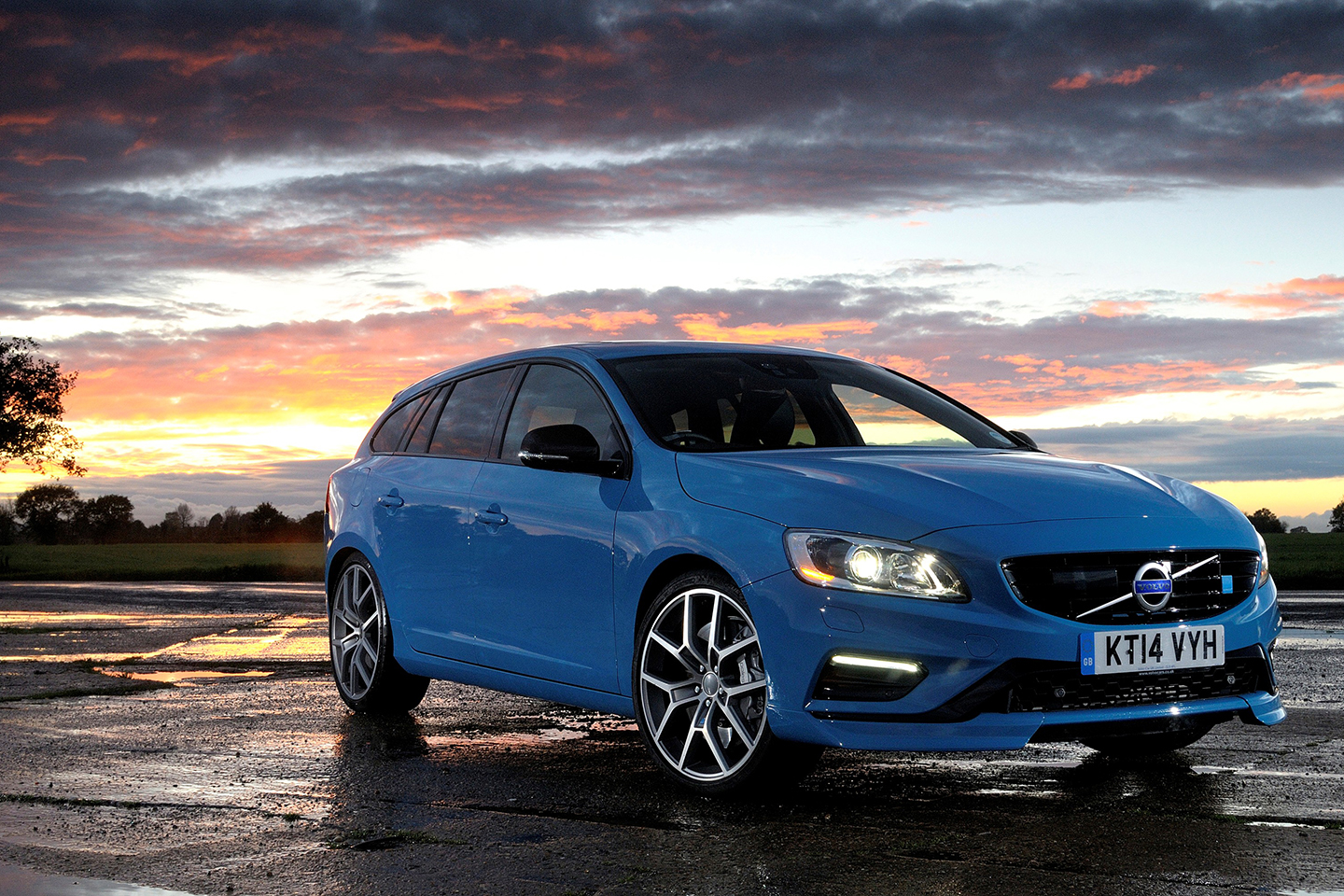
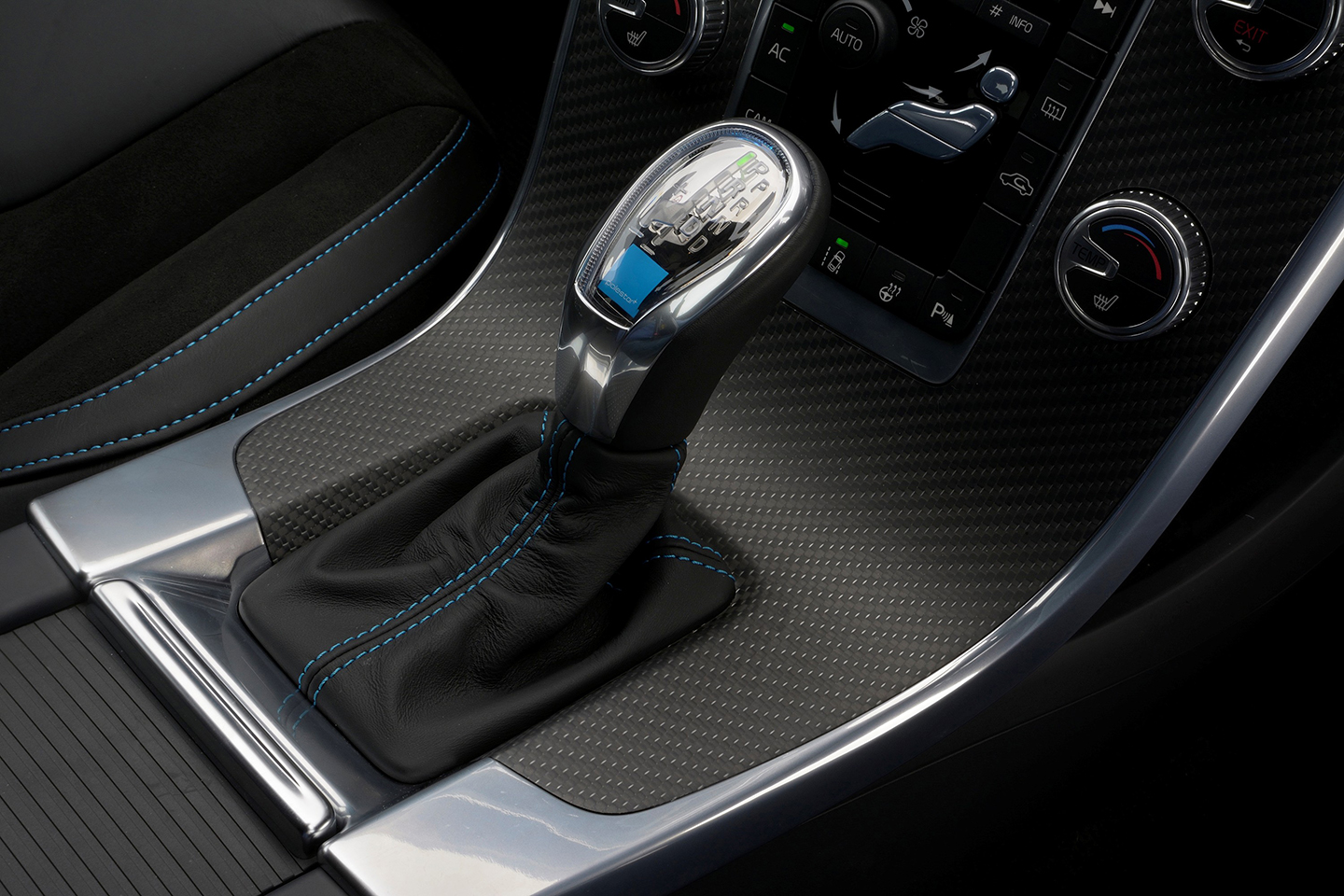
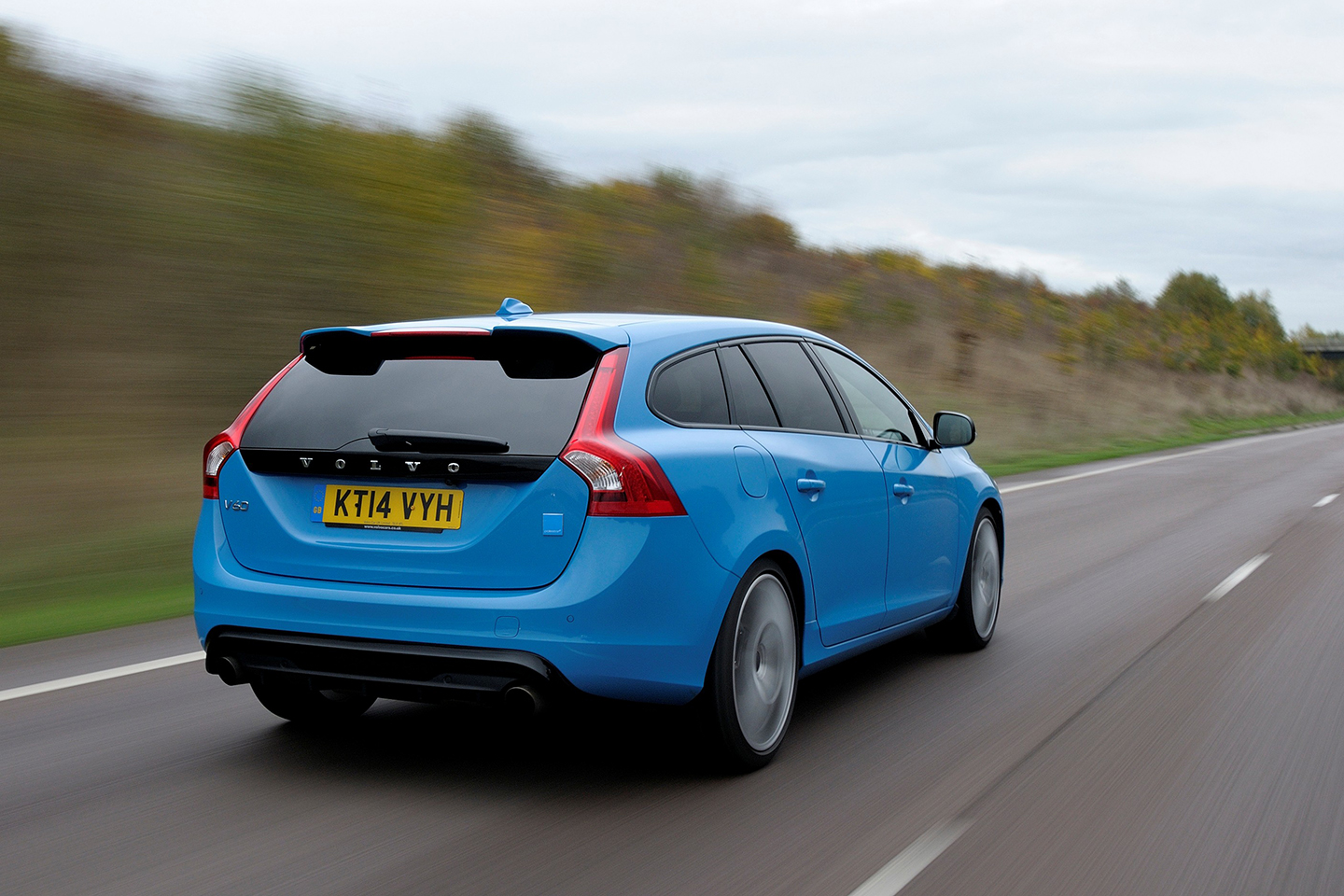
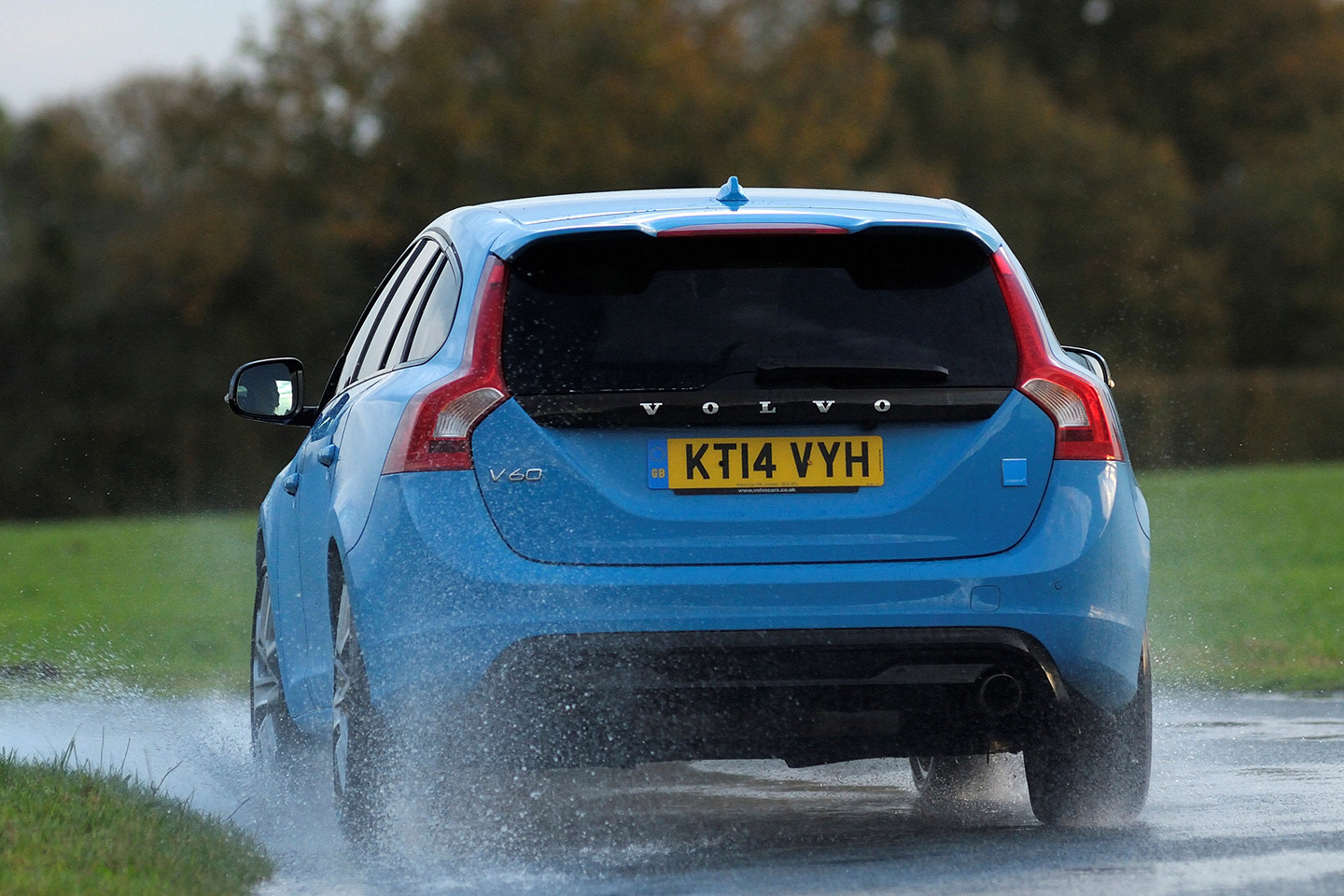
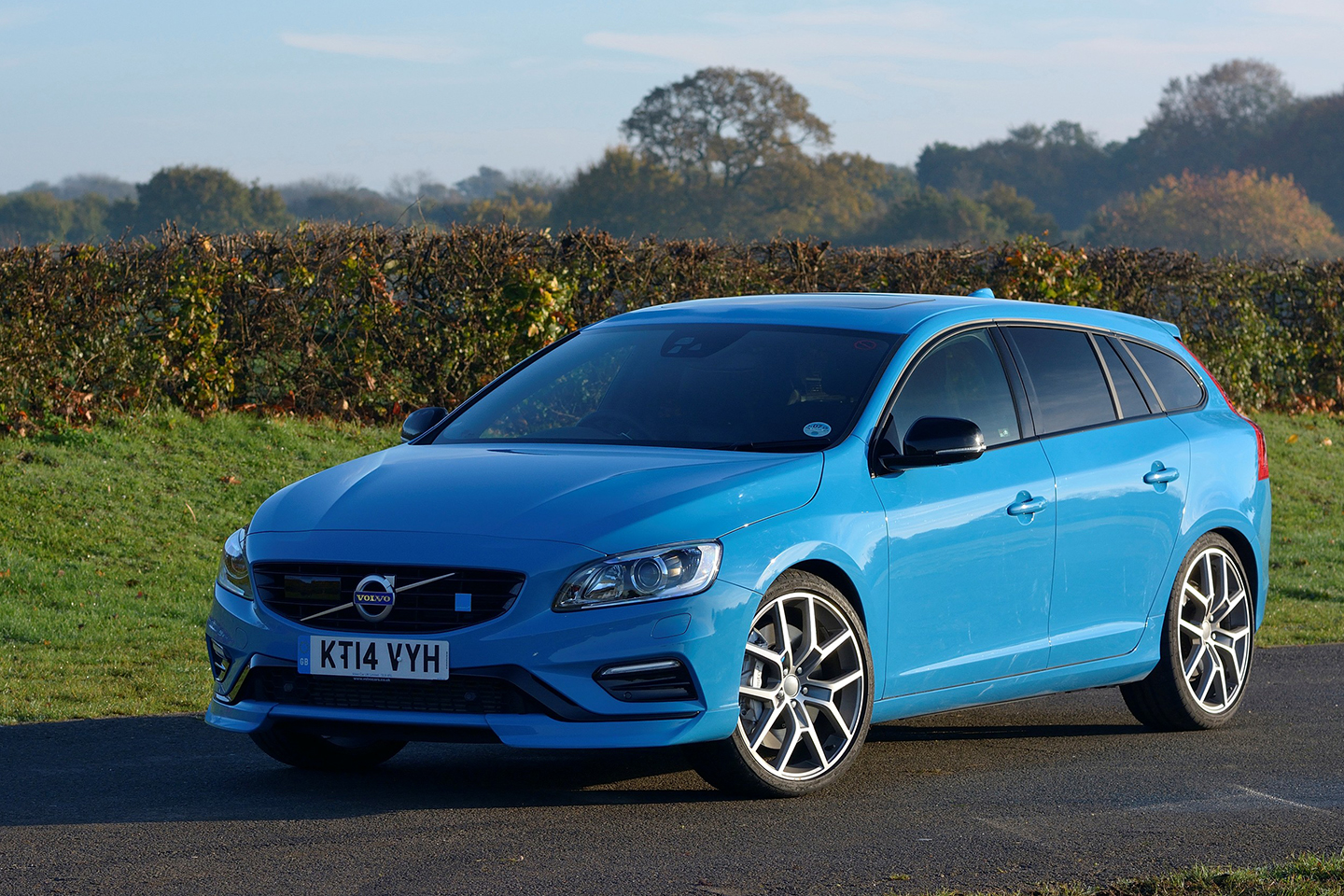
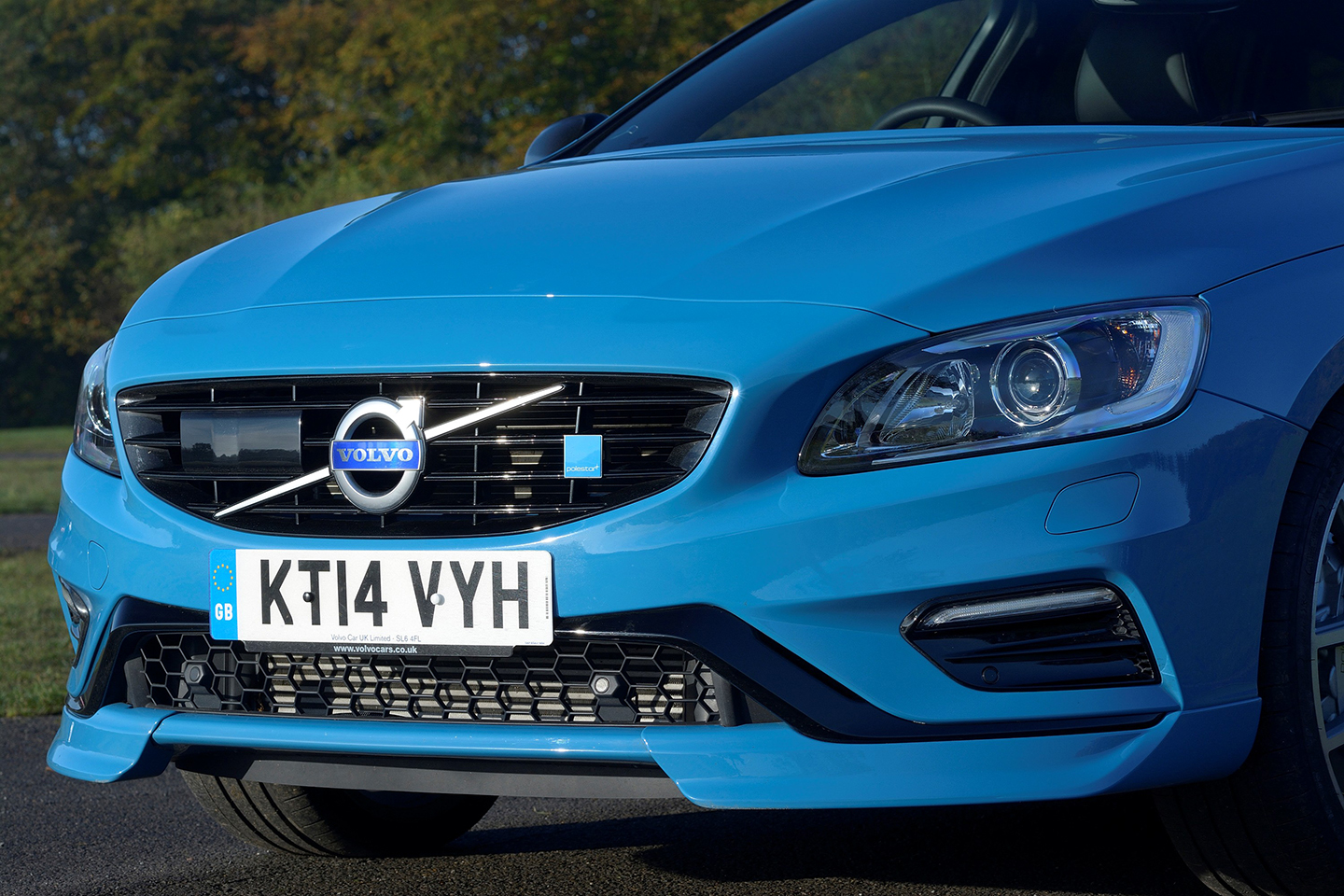
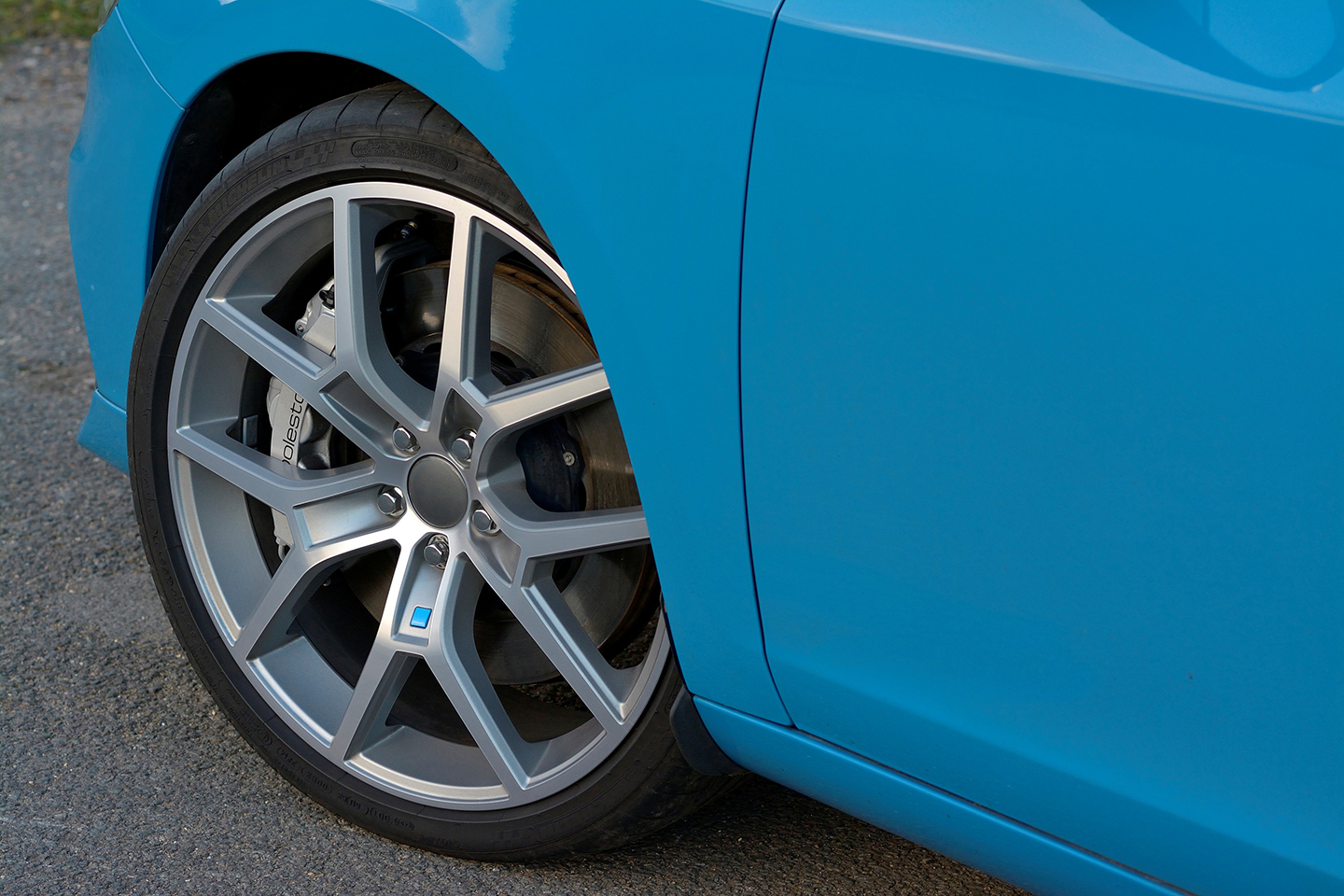
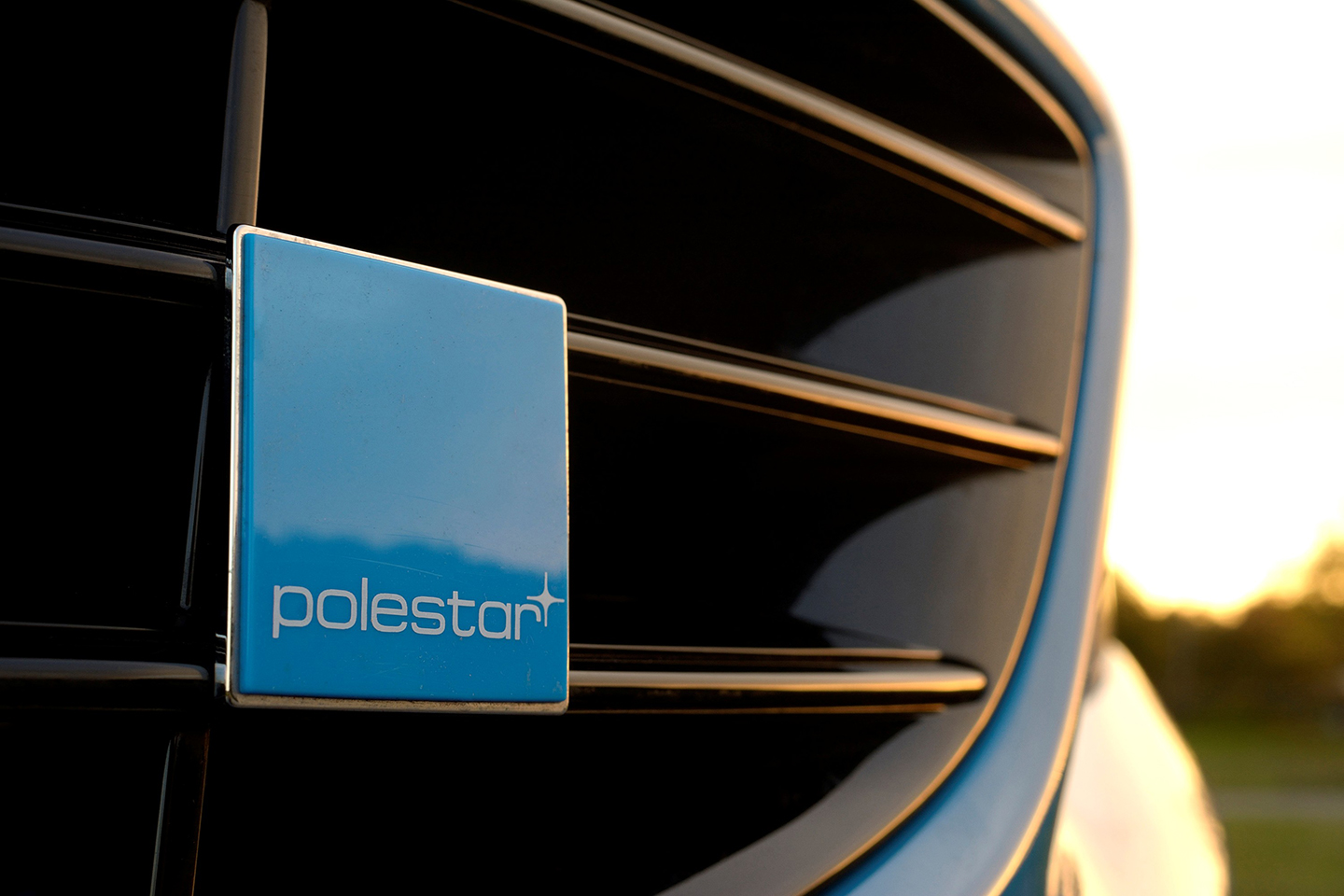
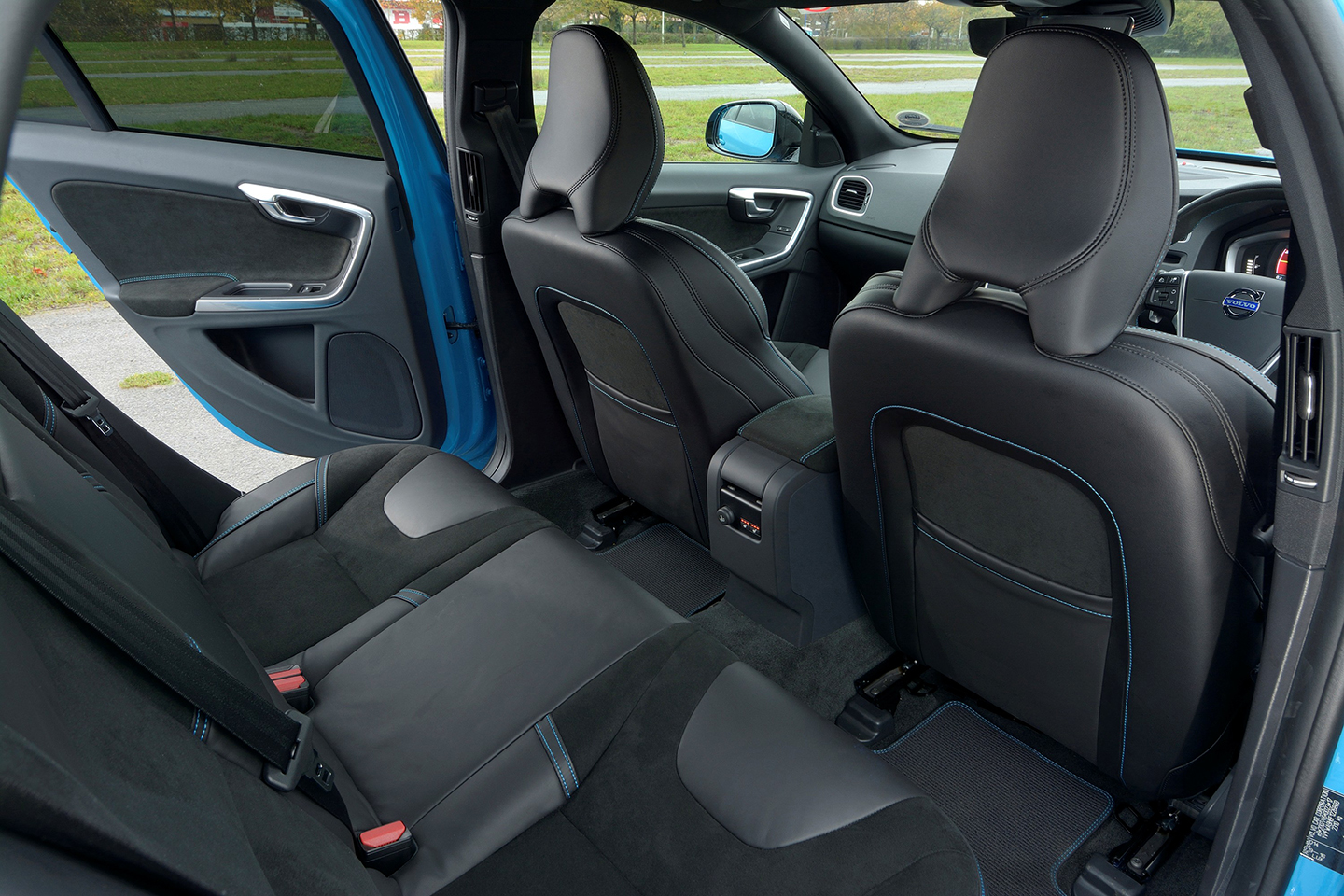
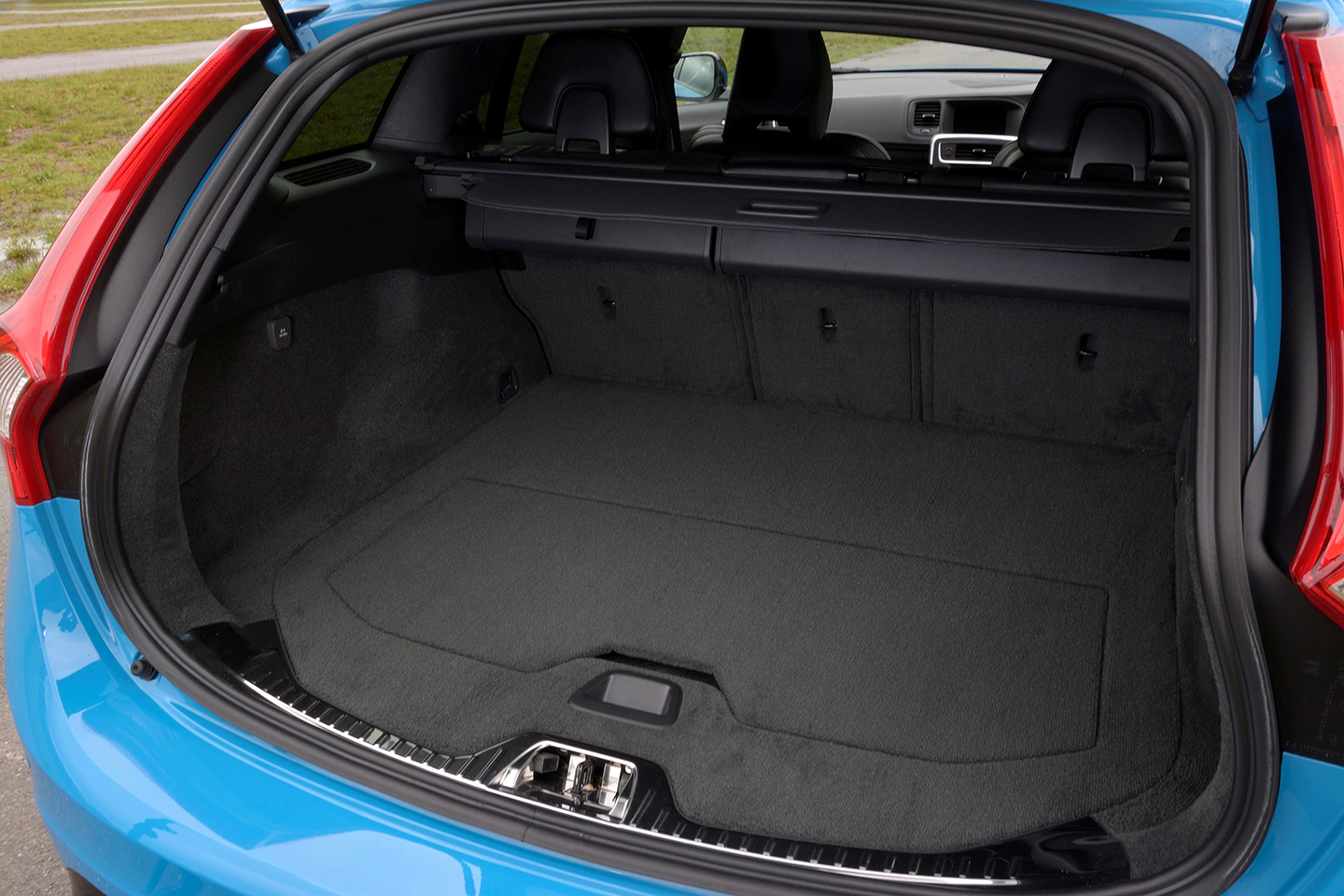
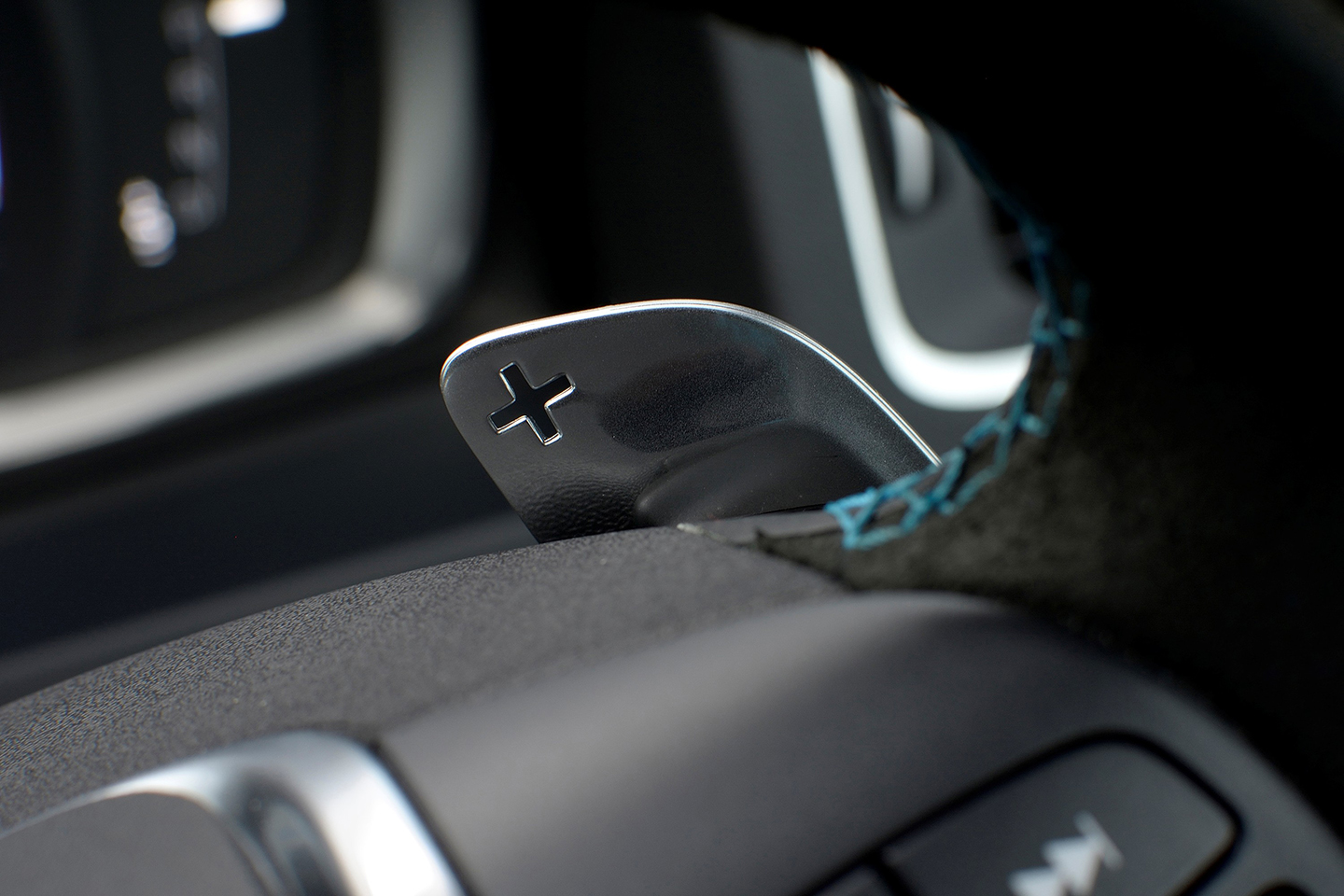
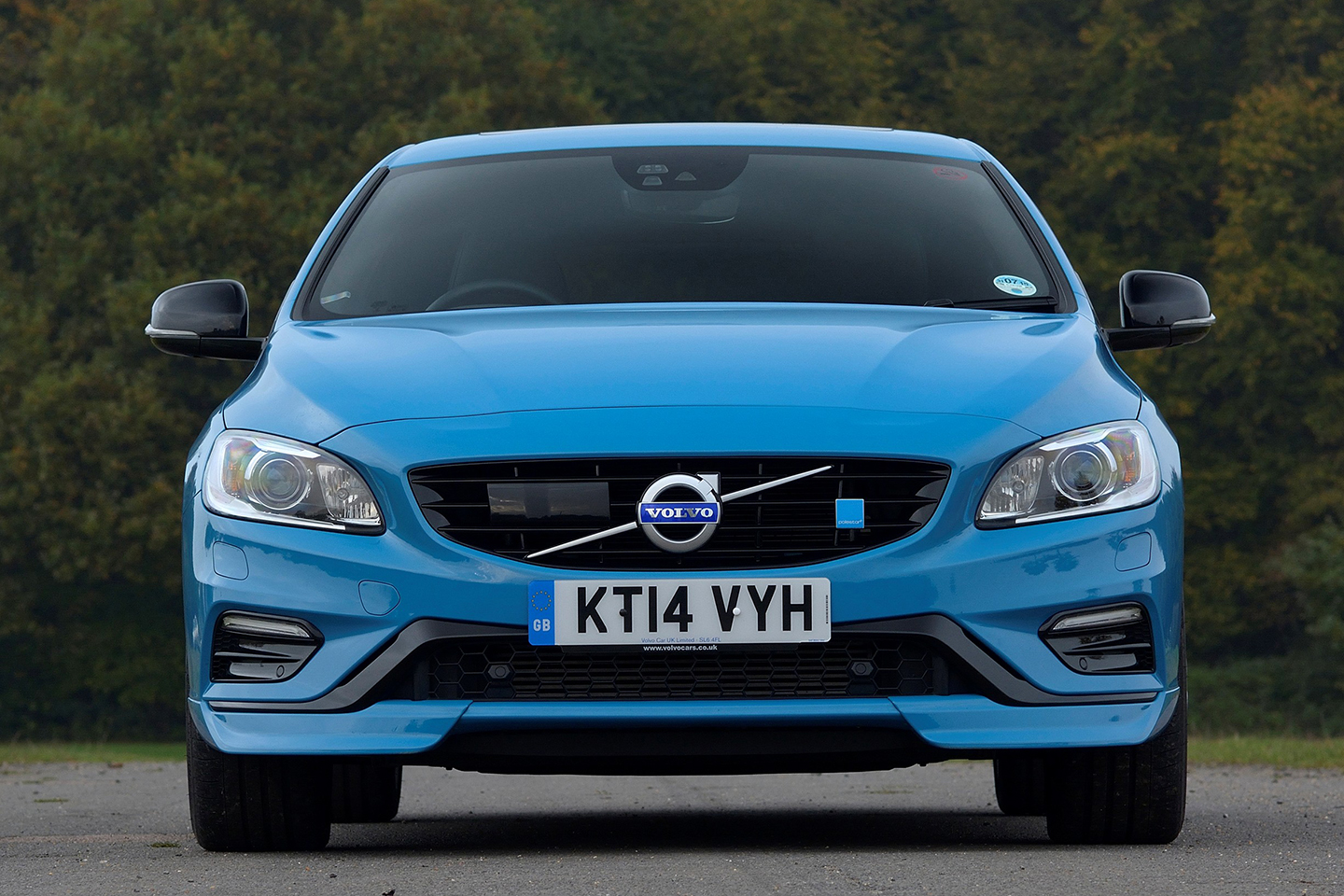
I’ve had German, Japanese and ‘English’ and the most unreliable was the latter and it was the Japanese that needed the most wear and tear spend.
Bought an S6 instead which ended up costing me £4k in engine repairs when the timing chain tensioner failed!
Why didn't I buy the Volvo godammit!
Bought an S6 instead which ended up costing me £4k in engine repairs when the timing chain tensioner failed!
Why didn't I buy the Volvo godammit!
Went for a Superb 280 instead, more boring but a better family car. I'd still like to have one of these although the 6 cylinder with the 8 speed auto would be ideal...
If you've been through a few VAG products, BMWs and Mercs, this offers an alternative way of doing things. That's all.
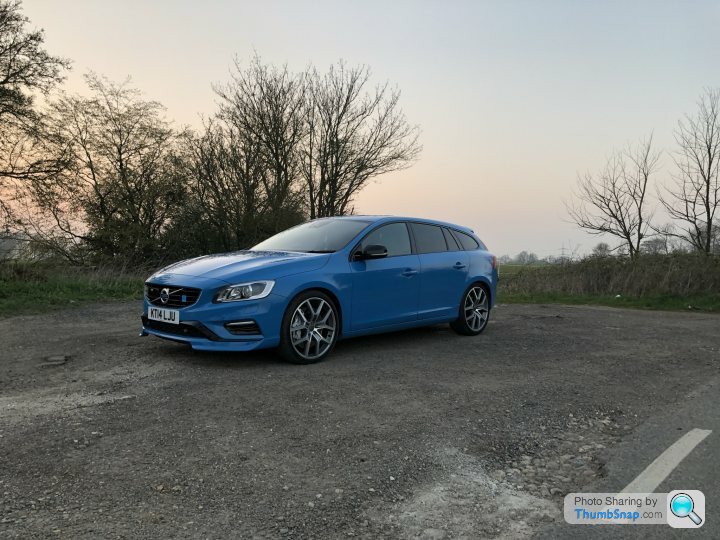
I owned the other press car a few years back now, had it for 2 years, if it wasn’t for the fuel consumption I would still have it, I live in central London and it would only do about 14mpg in stop start traffic. Mind you on a run it would see 30mpg.
Aside from the owners meets I have only ever seen 2 on the road, pretty much bullet proof, give any //M or RS of the same era a decent run for its money, servicing aside from the front brakes is no more than a regular family Volvo.
I sold mine for pretty much what I paid for it.
You can only have one in blue in mind, they are the fastest P* followed by silver, white then black 🤣🤣
Went for a Superb 280 instead, more boring but a better family car. I'd still like to have one of these although the 6 cylinder with the 8 speed auto would be ideal...
Why is the infotainment SO TINY and can't be easily upgraded.
Just can't make it work, mentally.
Gassing Station | General Gassing | Top of Page | What's New | My Stuff

